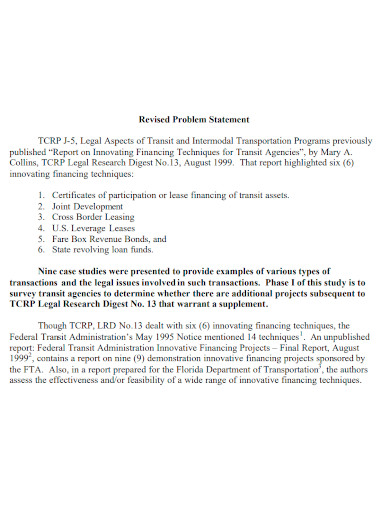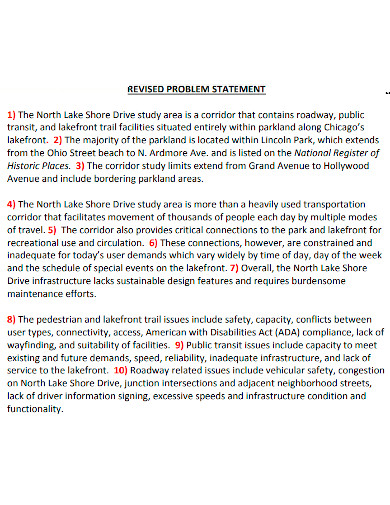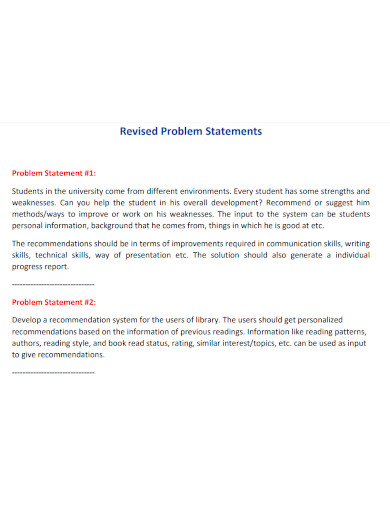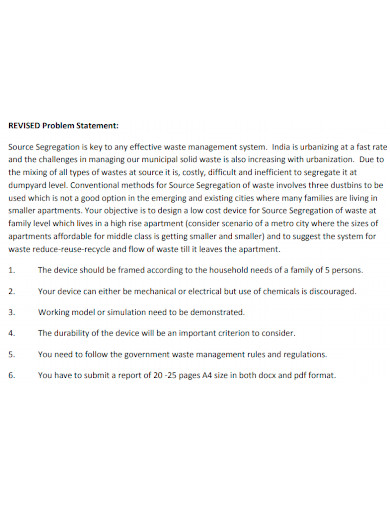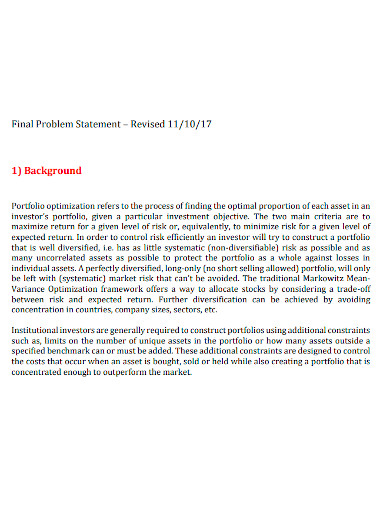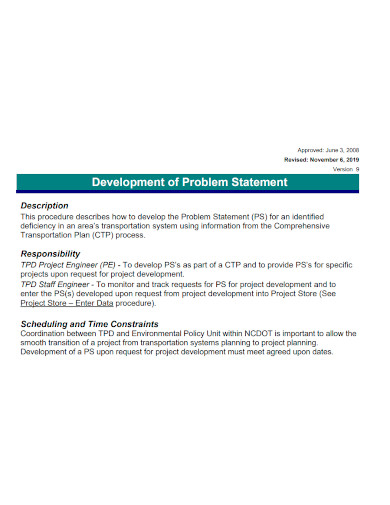Continuous improvement experts are tasked with finding solutions to problems that arise inside their businesses or for their clients. They have amassed a diverse collection of tools, methods, and approaches to accomplish this goal. The ability to build the winning circumstances for change will allow continuous improvement practitioners to anticipate and achieve effective results in their work. The devil, as they say, is in the details, which makes employment in continuous improvement both exciting and difficult. One of those “small devils” that gets forgotten all too frequently is the requirement to develop an effective issue statement at the outset of every improvement initiative.
Numerous firms and organizations employ process improvement initiatives to create changes in the way they conduct their operations. Although there are several factors that contribute to the success of a process improvement project, the first step in every project is identifying the problem that has to be addressed. It might be beneficial to understand what a problem statement is and how to develop one while working on process improvement initiatives in order to be more effective. An example of a problem statement is provided in this article to demonstrate what a problem statement is and what its important parts are.
6+ Revised Problem Statement Samples
1. Revised Problem Statement Sample
2. Standard Revised Problem Statement
3. Revised Problem Statement Format
4. General Revised Problem Statement
5. Revised Final Problem Statement
6. Editable Revised Problem Statement
7. Revised Draft Problem Statement
What Is a Revised Problem Statement?
The following is an adaptation of an essay by Alan Bryman that appeared in the International Journal of Social Research Methodology: It is a problem when someone makes a statement about an area of concern, a condition that needs improvement, a difficulty that needs to be eliminated, or a troubling question that exists either theoretically or practically and that indicates the need for meaningful understanding and deliberate investigation. Essentially, a problem statement is a succinct summary of the problem or difficulties that the project tries to resolve. Identifying the current state, the anticipated future state, and any gaps between the two are all part of the issue statement’s scope. A problem statement is a crucial communication tool that may assist in ensuring that everyone working on a project understands the problem they are trying to solve as well as the importance of the project in general.
Elements of a Revised Problem Statement
The following is an adaptation of an essay by Alan Bryman that appeared in the International Journal of Social Research Methodology: It is a problem when someone makes a statement about an area of concern, a condition that needs improvement, a difficulty that needs to be eliminated, or a troubling question that exists either theoretically or practically and that indicates the need for meaningful understanding and deliberate investigation. Essentially, a problem statement is a succinct summary of the problem or difficulties that the project tries to resolve. Identifying the current state, the anticipated future state, and any gaps between the two are all part of the issue statement’s scope. A problem statement is a crucial communication tool that may assist in ensuring that everyone working on a project understands the problem they are trying to solve as well as the importance of the project in general.
- Ideal situation
When writing your issue statement, the first thing you should express is what the ideal condition would be if there weren’t a problem that needed to be solved. This section outlines the objectives and scope of the project, among other things. This part should help the reader have a clear concept of what the ideal environment will look like once the problem has been handled. - Reality
If your firm or organization is currently experiencing an issue, the following portion of your problem statement should describe that situation. This part will define the problem, explain why it is a problem, and identify the people who are impacted by the situation. It will also include information on when and where the problem was discovered. - Consequences
What are the repercussions of the situation? This should be addressed in the next part of your problem statement. Here, you will find a description of the problem’s consequences on those who are touched by it, as well as a quantitative assessment of how much the problem is impacting them. The loss of time, money, resources, competitive advantage, productivity, and other factors are all common outcomes of business decisions. - Proposal
It is vital to note that the proposal portion of a problem statement may contain numerous viable solutions to the problem; nevertheless, it is not required to specify a single answer. The objective of the proposal part should be to instruct the project team on how they might study, investigate, and answer the problem. The proposal section should be concise and to the point.
FAQs
What is in a problem statement?
A problem statement should indicate a discrepancy between the current state-level of performance and the desired future-state level of performance, which is undesirable. However, the problem description should not contain probable causes or remedies, but rather absolute or relative measures of the problem that quantify the gap.
How to write a problem statement?
- Identify the problem
- Begin your statement with your ideal situation
- Describe current gaps
- State the consequences of the problem
- Propose addressing the problem
Why is it so hard to write a problem statement?
One of the major challenges in writing a good problem statement is the various distractions from a variety of sources. An excellent issue statement must be free of causes, remedies, and blame; it must also be carefully considered to ensure that symptoms do not become a distraction from the main focus of the problem.
Being able to develop a compelling issue statement is not just a valuable business talent, but it is also a valuable life skill. In the absence of a clear description of their difficulties, how can children, adolescents, and adults begin to solve their problems? This holds true for those who work in the field of continuous development. The 5W2H technique (what, when, where, why, who, how, and how much) appears to be deceptively straightforward. Make sure you ask the appropriate questions in the proper order, and the answers will lead you to a fantastic issue statement.
Related Posts
FREE 10+ Profit and Loss Report Samples
FREE 10+ Church Action Plan Samples
FREE 10+ Sample Do Not Resuscitate Forms
FREE 9+ Net Worth Statement Samples
FREE 40+ Sample Objectives
FREE 30+ Sample Quotation Letter Templates
FREE 26+ Employment Contract Samples & Templates
FREE 22+ Letter of Support Samples
FREE 20+ Sample SOP Templates
FREE 16+ Sample Endorsement Letter Samples
FREE 14+ Statement of Work Samples
FREE 9+ Motor Vehicle Bill of Sale Samples
FREE 8+ School Petitions
FREE 8+ Sample Business Credit Card Agreement Templates
FREE 6+ Sample Printable Employee Handbook Templates

